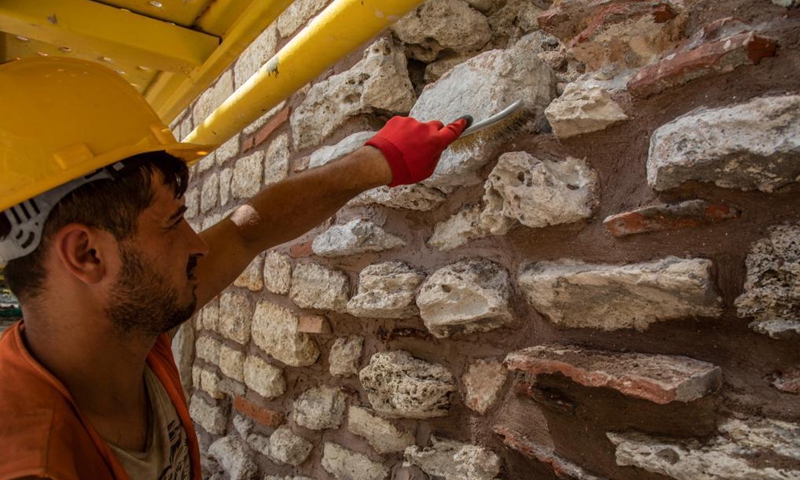
A man works to restore the Boukoleon Palace in Istanbul, Turkey, on July 2, 2021.Photo:Xinhua
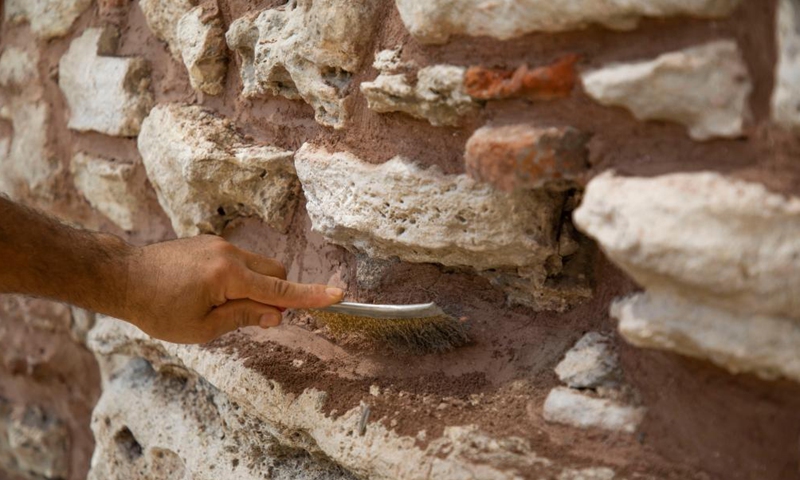
Photo taken on July 2, 2021 shows the Boukoleon Palace in the restoration process in Istanbul, Turkey.Photo:Xinhua
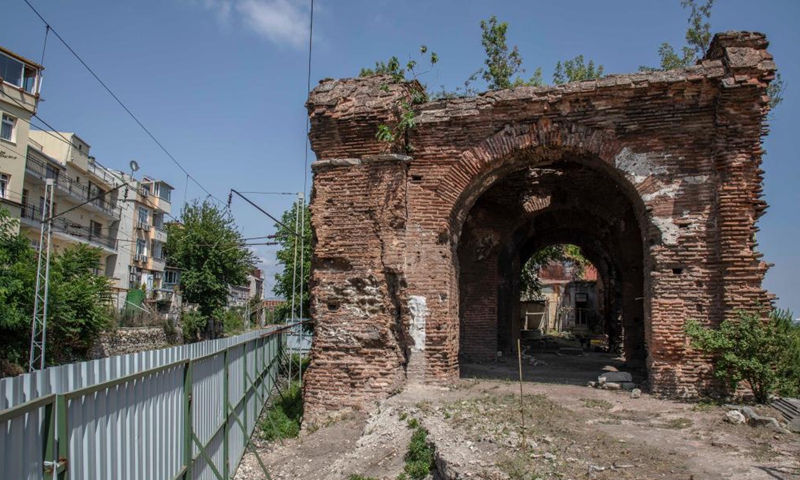
Photo taken on July 2, 2021 shows the Boukoleon Palace in the restoration process in Istanbul, Turkey.Photo:Xinhua
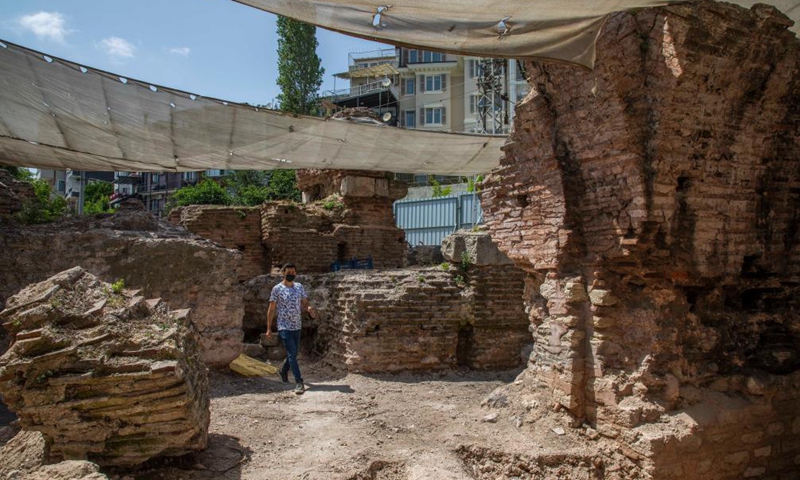
Photo taken on July 2, 2021 shows the Boukoleon Palace in the restoration process in Istanbul, Turkey.Photo:Xinhua
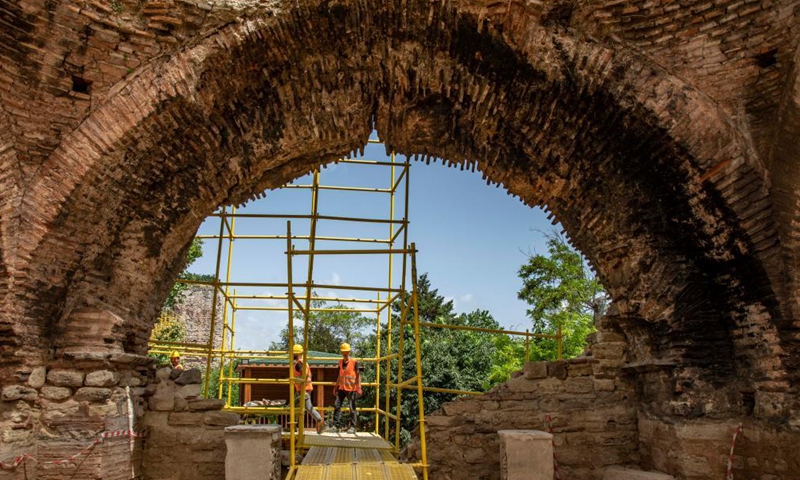
People work to restore the Boukoleon Palace in Istanbul, Turkey, on July 2, 2021.Photo:Xinhua
"After the emperor comes from the sea along with his men, he passes through this courtyard with a huge dome, where a ceremony is held with dozens of soldiers lining up and then enters the palace," an expert on late antique and Byzantine archaeology told his team.
"Everything is majestic here, and monumental and ceremonial," Engin Akyurek, an academic with the Koc University, spoke about the Boukoleon Palace, one of the Byzantine-era structures in Turkey's biggest city Istanbul.
Located on the shore of the Marmara Sea, expanding toward the Sultanahmet Square in the north, the 1,600-year-old palace is one of the oldest witnesses of Istanbul's history.
However, the once magnificent palace was damaged over time, a part of which was destroyed, and it turned into a site that Istanbulites rarely visit.
Under the supervision of a scientific committee, Istanbul municipality's Cultural Assets Conservation Department has launched an archeological restoration project, which aims at transforming this UNESCO World Heritage site, as well as the nearby sea and land walls of the ancient city, into an open-air museum and creating an enriched sightseeing route.
"Our principle is to conduct the restoration with the minimal intervention," Oktay Ozel, head of the department, told Xinhua.
For Akyurek, who leads the scientific committee, the piers and richly ornamented columns unearthed during the ongoing archaeological study have shown that the mansion was important as its unique location enabled the Byzantine emperors to access the sea conveniently.
"This palace and the history will be reinterpreted," as the excavations would continue to reveal new information each day, Akyurek said.
Ozel's teams have been carrying out some other multi-faceted restoration projects across Istanbul, covering several castles, which played significant roles in defending the city against enemies throughout history, as well as ancient fountains that adorn the streets.
Residents and experts in Istanbul can inspect the ongoing restoration and conservation work of the municipality and get information from the authorities on the spot, according to Ozel.
"We accept visitors to the field ... They can both gain knowledge and experience the processes of the restoration and archaeological excavation," he said.
Previously, some renovations in Istanbul incurred experts' critism for ill-advised techniques applied. Last year, parts of the interior walls of the city's iconic Galata Tower in Beyoglu district were demolished by a hammer drill, causing the Istanbul municipality to file a complaint against all parties involved in the restoration process.
